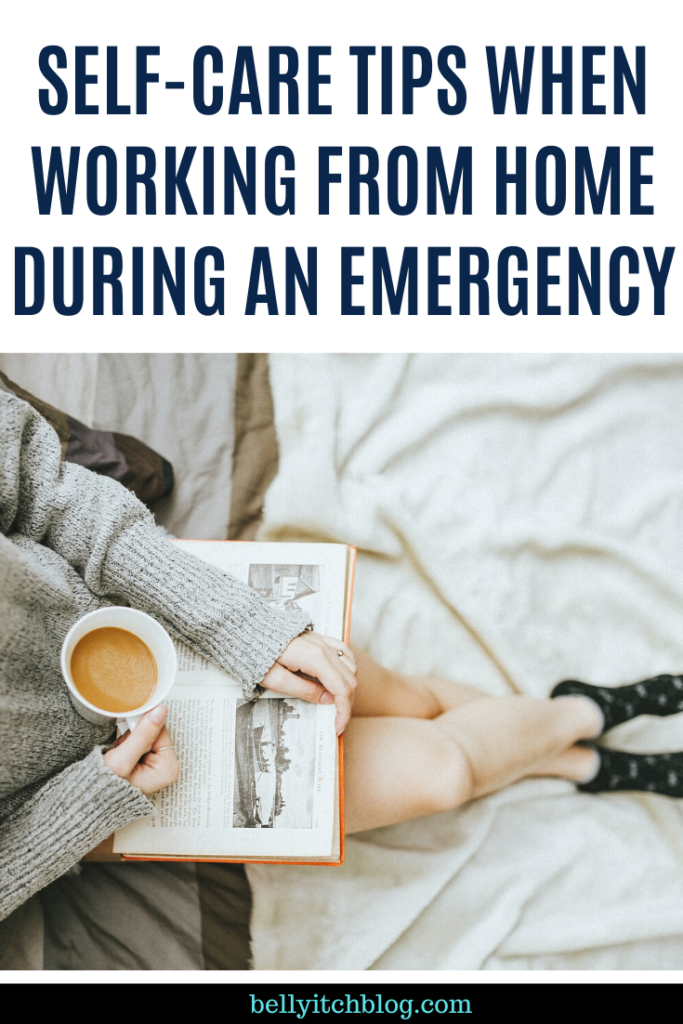Photo by Anthony Tran on Unsplash
Some people work from home by choice and love it. But a whole new contingent of people have started having to work at home over the past few weeks due to the Coronavirus pandemic. Many of those people prefer working in an office, and are missing out on what the environment provides them.
In emergency situations like this one, employees may have no choice about their workplace location. Working from home may be mandated in their company or area regardless of preference—and there may be no clear timeline on when such quarantining will end.
In such cases, you may find yourself wondering how to practice self-care while working from home, and wondering how to cope with feeling anxious, uncertain, scared, and/or lonely. Read on to learn how to make working from home feel more connected and less “out at sea” when you find yourself unexpectedly housebound, whether due to a crisis situation, company reorganization, or other reasons.
Create a Daily Routine
If you’re someone who thrives in an office setting, one reason why may be the built-in structure that office life often affords. You arrive for work at the same time each morning, have a predictable schedule of meetings and desk time, a lunch break, and an end to the day before dinnertime that you can usually count on.
Working from home can feel the opposite of this, since without creating your own structure, you may find yourself at loose ends, getting absorbed into domestic minutia instead of staying on task with your deadlines and projects. The solution to this is to develop a reliable daily routine that you can use as a framework for your work-from-home days.
A good idea here is to try to model what works for you in the office—at home. If you usually begin your day at 9am sharp with a cup of green tea and a review of your task list at your desk before attending a 9:30 staff meeting, followed by a two-hour block of focused task time at your desk with your headphones on, then see to it that you set your alarm in enough time to get you to your desk at home by 9am with your teacup in hand.
Ask your supervisor if the staff meeting can be conducted by conference call at the same time it was done in the office. After you’ve connected with your team, then reserve that same post-meeting, two-hour block of focused time for your most pressing projects.
Breaks and Lunch
Other ways to create a daily routine for structure are to plan out your lunches in a similar way that you did in the office. For example, if you always packed a sandwich and fruit—making it ahead of time that morning—then stick to your schedule and prep your lunch at the start of the day so it’s ready for your break. If you’re a reliable noon luncher, then don’t let work bleed into the afternoon with your stomach growling just because you are home—instead, set an alarm for noon so that you stop and eat at the usual time.
And if you always sat with a specific friend at work for lunch, then see if you can connect through technology to eat “together” from home. Scheduling a few regular breaks in addition to lunchtime can also help you stay mentally fresh and energized while working from home.
Use Apps to Create Structure and Boost Mood
You don’t have to reinvent the wheel when it comes to self-care and working from home. See below for some free helpful apps that you can use to meditate, take a break, or focus.
Break Apps
Working for hours without remembering to take a break is unhealthy and can lead to physical and mental ailments, so try out the mobile device reminder apps below that can ping you so that you can mentally refresh throughout the day.
For iPhone and iPad, this app allows you to customize your preferred break time to your specific work schedule. You can set reminder intervals in increments ranging from five minutes to two hours. And, it even provides a seven-day history so you can see how well you’re doing at taking your regular breaks.
An Android app that you can use to remind you not only to take breaks, but to engage in other healthy habits like drinking water or exercising. Fully customizable for daily, weekly, and monthly reminders.
Meditation Apps
One thing you might want to do on your work breaks, once reminded of them, is meditate. The apps below can help you do it.
Available for iPhone and Android, this app gives you timed sessions up to 30 minutes long (and as short as three minutes) for both guided and silent meditations. Customizable format with bells and nature sounds.
Headspace offers an app for both iPhone and Android users. It offers lessons in meditation, breathing, living mindfully—and even sleeping, to restore yourself after your busy workday. Features courses that each have a series of guided meditations.
Focus Apps
Any workplace—whether an office or at home— has distractions. To focus better, try these apps:
A free Mac app that clears your computer screen’s clutter by allowing you to view one window at a time.
A science-centered way to create music that improves brain activity and improves your focus.
Make Your Setting Inviting
Invest some time into creating a work setting that makes you feel comfortable and productive.
This effort begins with the basics, like your home office location. If you have a space that you can dedicate solely to your work for the time being, that will go a long way toward making your space feel like one where you’d like to get the job done. Don’t fall prey to claiming the first thing you see—settling into a chair at the kitchen table where everyone eats, or plunking down on the communal sofa in the living room.
The problem with these areas is that they are already designated for other functions, and will likely come with their share of interruptions. It’s also difficult to set up anything permanent there, since you’ll need to frequently move your laptop and papers when the space needs to be used for something else (or by someone else). Instead, claim a quiet corner in a room where you won’t be disturbed. See if your company allows for reimbursements for materials related to your required home office, such as a proper desk chair and printer.
Also consider the decor of your home office space. Small touches like plants, pictures, and filing cabinets can help keep your work space feeling like a place you want to be, and can help you feel better while working from home.
Adapting to Working from Home and Practicing Self-Care
Working from home, especially when unexpected, can present challenges. But there are many benefits to remote work, as well. Saving time by avoiding a commute, minimizing environmental footprint, and increased productivity are just a few.
So, make the best of your work-from-home experience and take some initiative toward your own self-care. You can boost your mood and feel more connected from right where you live.
Interested in more remote work tips? Subscribe to our newsletter and we’ll deliver advice straight to your inbox.
















